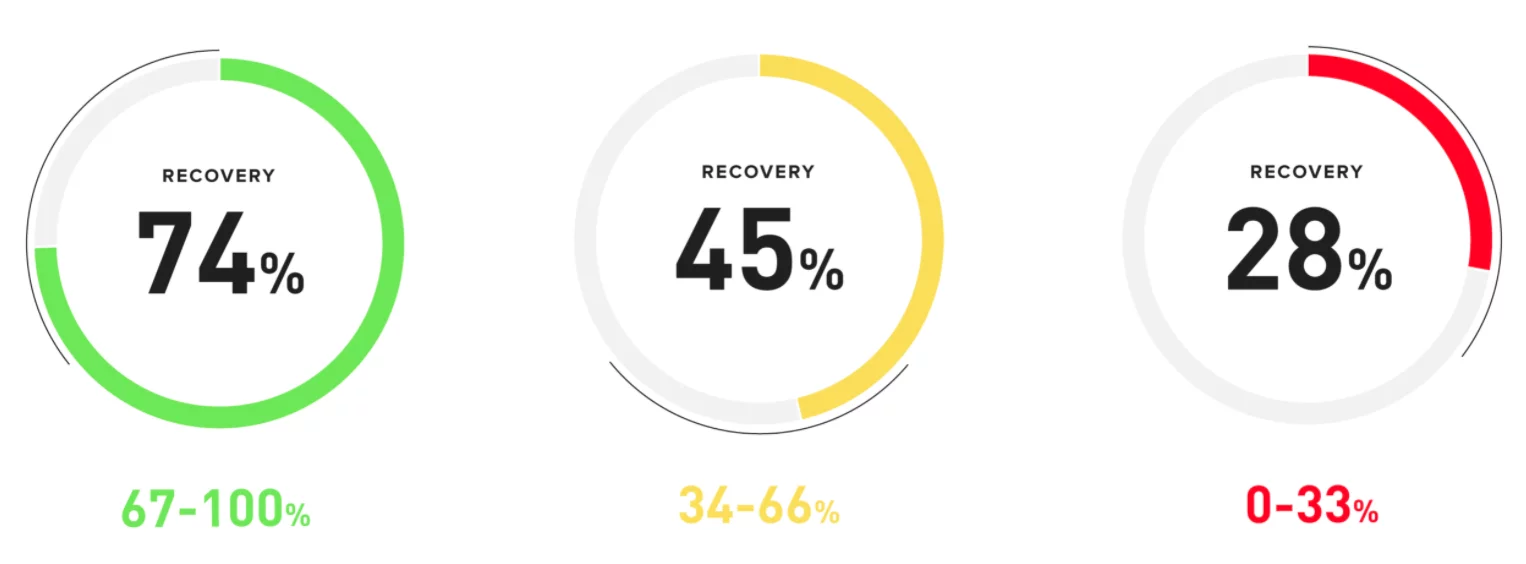WHOOP 101
WHOOP is a 24/7 wearable that helps members understand how well their bodies function and how they change over time. Through continuous monitoring of physiological signals, WHOOP helps members understand how well their body performs and recovers. As a developer, you have the opportunity to build integrations that leverage WHOOP insights across three pillars - Strain, Recovery, and Sleep.
This guide will provide you with an overview of the core concepts powering WHOOP to get you ready to build your app.
Strain
WHOOP Strain is a measurement of the amount of stress on your body. The Strain score is a number on a 0 to 21 scale, based on the Borg Scale of Perceived Exertion. WHOOP scores Strain continuously for members throughout the day and every workout.
Note: Strain is not on a linear scale. It takes more stress to move from a score of 16 to 17 than 4 to 5.
Your body is constantly changing, and each day is different. If you do the same workout two days in a row, you will likely report different Strain scores based on fluctuations in how your body recovered and changed. Strain is also specific to your baseline. Two people making the same motions will likely generate different Strain scores.
WHOOP categorizes Strain score values into Light, Moderate, High, and All Out.

- Light Strain (0-9) - This strain category indicates room for active recovery with minimal stress on the body.
- Moderate Strain (10-13) - This category indicates moderate stress on the body, which helps maintain fitness.
- High Strain (14-17) - This category indicates increased stress which helps build fitness gains in your training.
- All Out (18-21) - This category indicates all-out training or a packed activity day that puts significant stress on the body and may be difficult to recover from the day after.
Workout Activity
WHOOP tracks workouts for you and how much Strain accumulated over the workout. You can create workout activities manually, import them from other sources like Apple Health, or WHOOP may automatically detect and classify workouts .
WHOOP keeps track of what type of activity you performed (e.g., Running, Cycle), Strain score, and other physiological measurements such as duration in Heart Rate Zones.
Recovery
WHOOP Recovery is a daily measure of how prepared your body is to perform. When you wake up in the morning, WHOOP calculates a Recovery score as a percentage between 0 - 100%. The higher the score, the more primed your body is to take on Strain that day.
WHOOP calculates Recovery scores using measurements from the previous day and your sleep, such as resting heart rate (RHR), heart rate variability (HRV), respiratory rate, sleep duration/quality, skin temperature, and blood oxygen. Unlike Strain, a Recovery score does not change over the day (unless you edit your sleep which triggers a Recovery score re-calculation).
WHOOP categorizes Recovery scores into one of three colors:

- GREEN (67-100%): You are well recovered and primed to perform. Whether at home, at work, or in the gym, your body is signaling that it can handle a strenuous day.
- YELLOW (34-66%): Your body is maintaining and ready to take on moderate amounts of strain.
- RED (0-33%): Rest is likely what your body needs. Your body is working hard to recover. Some reasons could include overtraining, sickness, stress, lack of sleep, or other lifestyle factors.
Sleep
WHOOP tracks your sleep, including how long you slept and the stages of your sleep - Light, REM, and Slow Wave Sleep (Deep). WHOOP also calculates how much sleep you need based on your Sleep Debt and your previous day's activity.